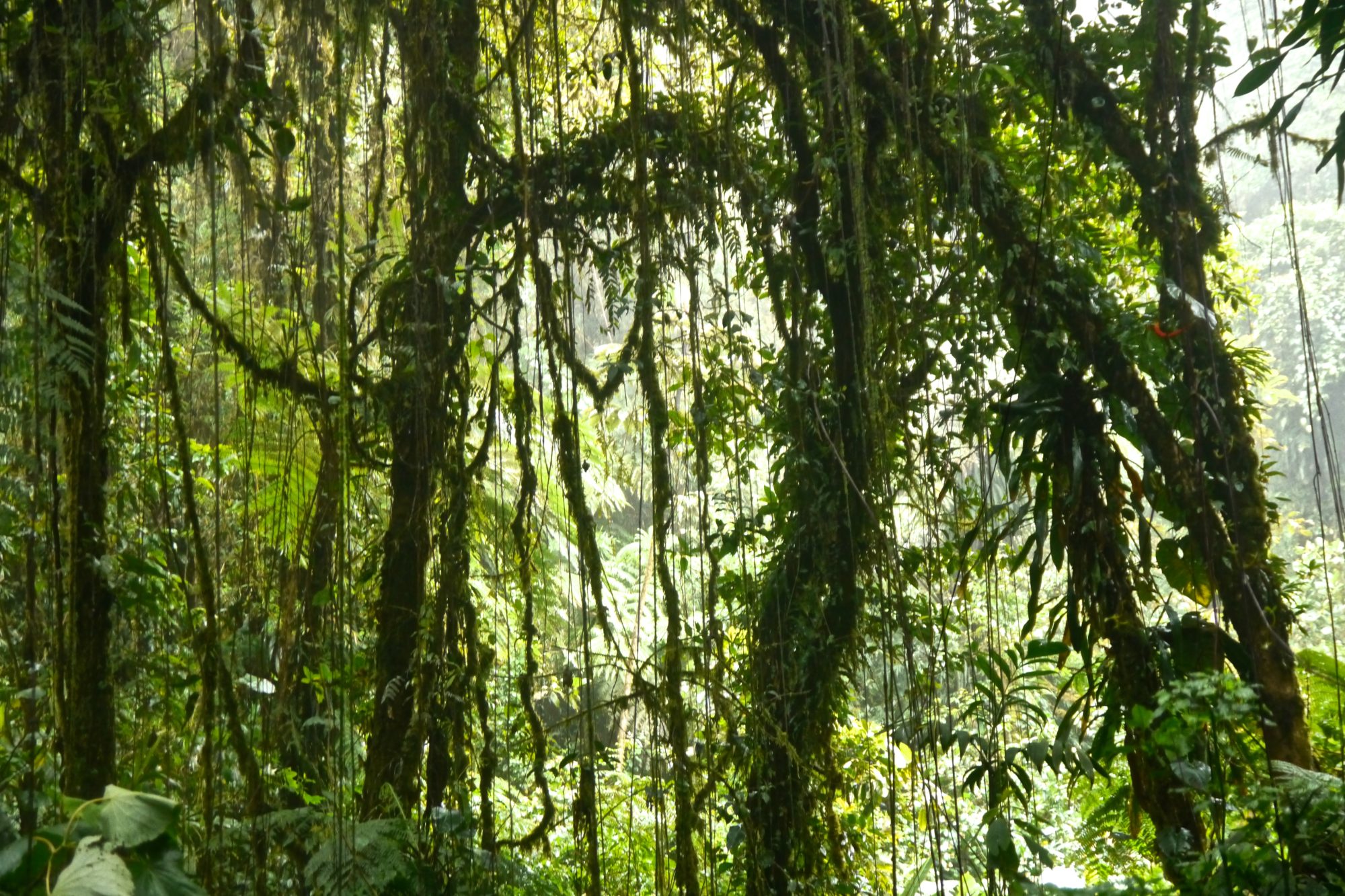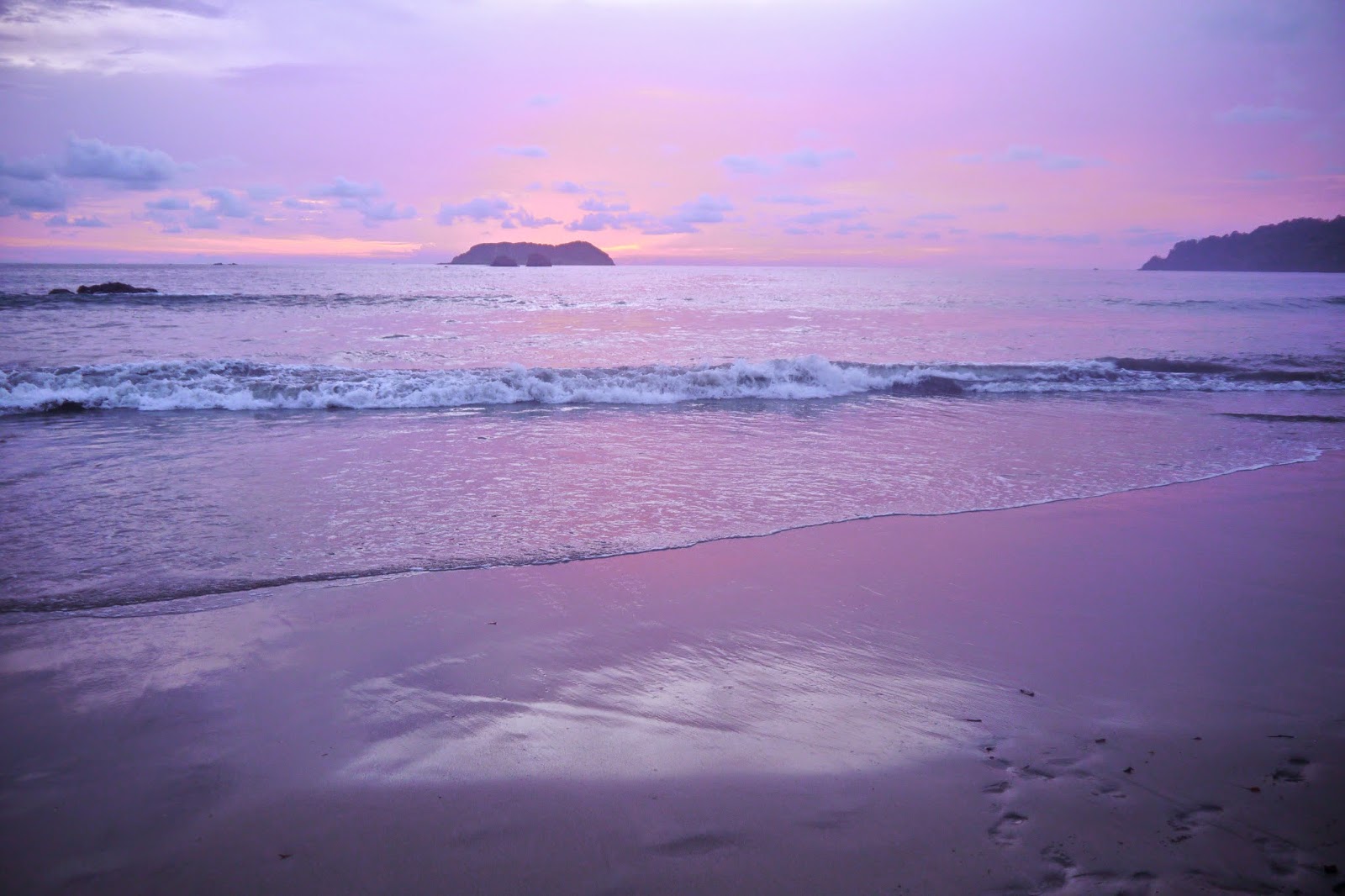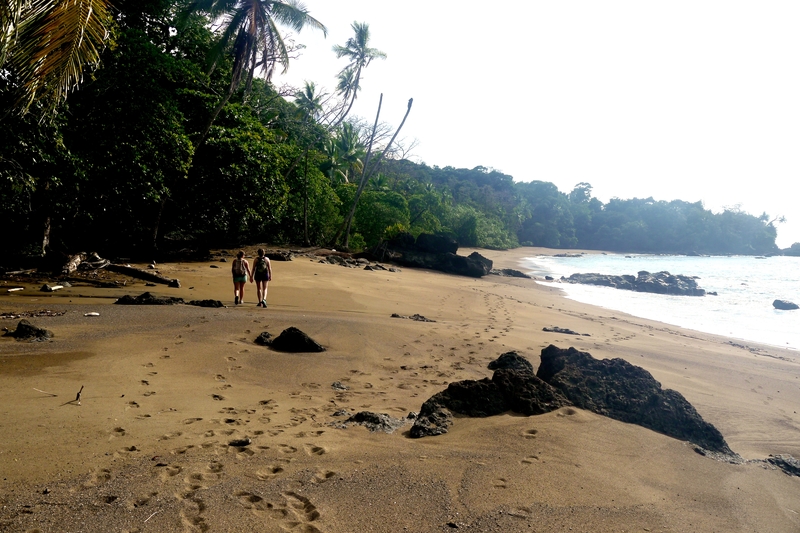
Wildlife in Corcovado National Park
Deemed by National Geographic as the most biologically intense place on Earth in terms of biodiversity, Costa Rica’s Corcovado National Park is home to 2.5% of the species found on the planet.
The park houses thirteen major ecosystems, including cloud forest, lowland rainforest, palm forest, mangrove swamps and coastal and underwater habitats. It is due to the park’s diversity of habitats, that tourists visiting Corcovado can view animals ranging from playful monkeys and elusive tapirs, to deadly fer-de-lance snakes, radiant macaws and elegant angelfish.
COSTA RICA’S CORCOVADO NATIONAL PARK
The 424 square kilometer park on Costa Rica’s Osa Peninsula is the largest in the country and everything I imagined it would be—raw, wild and teaming with life. The pages of our Lonely Planet guide made Corcovado seem so remote and impenetrable, that it could only be reached by either the wealthiest or the most intrepid of travelers. It described that there were no roads leading into the interior of the park and that, to reach the ranger stations, one must either fly in on a bush plane or embark on a daunting and perilous trek into the park’s wild interior.
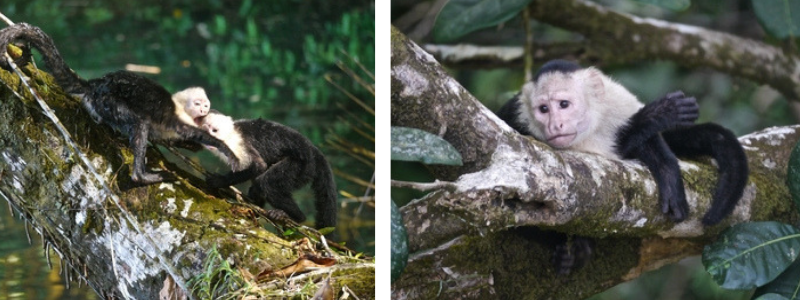
Reading about the park had us so intimidated, that we almost decided to forego visiting Corcovado altogether—until we spotted a flyer in our Manuel Antonio hostel that advertised a three day excursion with the Corcovado Adventure Tent Camp.
CORCOVADO NATIONAL PARK TOUR
The $400 price tag of the tour was a bit steep for our budgets, but after some discussion and number crunching, we decided to splurge and book the tour regardless.
Corcovado Adventure Tent Camp is paradise. It is remote, wild and completely uncontaminated by eyesore resorts and concrete hotel chains.
The camp sits on its own stretch of gold-sand beaches that are speckled with jet-black volcanic rocks and flanked on one side by lush green foliage and on the other by the blue waters of the mighty Pacific.

The tent camp was our home base during the three days we spent in the Osa Peninsula and the price tag on the accommodation included boat transfers from Sierpe, accommodation, meals, a guided hike into the heart of Corcovado National Park, a snorkel trip to Cano Island and access to the kayaks, hammocks and wilderness trails from the camp.
Though the tent camp we stayed at was not within the boundaries of Corcovado National Park, it may very well have been. The area around our fancy tents was rugged, wild and completely awe-inspiring. As with the luxury camps that I had often come across in Africa but never stayed at, nature was everywhere.
WILDLIFE SAFARI IN CORCOVADO PARK
During our first day at the camp, we spent the afternoon walking along the trails that led from our accommodation to Rio Claro. We traversed tawny crescents of beach and, along the way, stopped to admire groups of mischievous capuchins swinging in trees and dazzling scarlet macaws flying overhead.
I felt as though I had just entered the glossy pages of National Geographic’s latest issue.
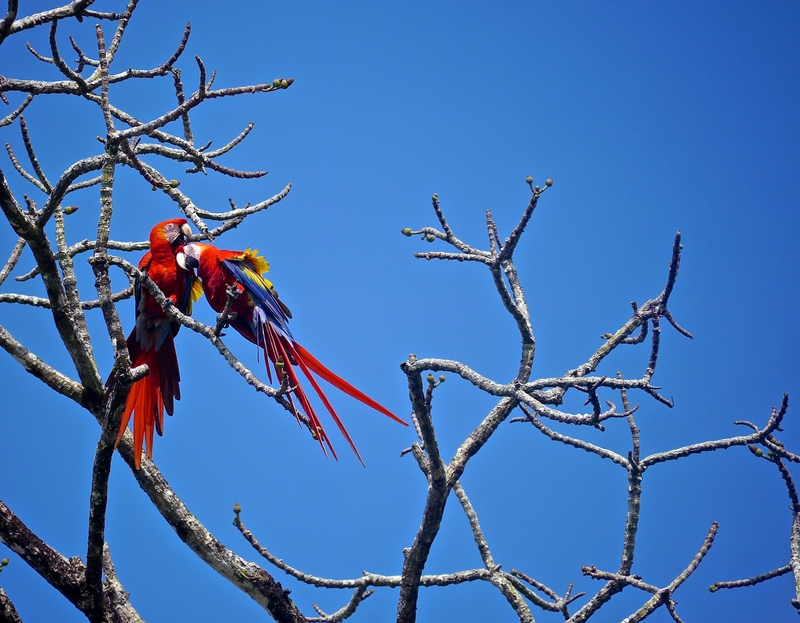
The next morning we woke up promptly at 6:00am and headed out for the jungle shortly after breakfast. The camp had organized a boat transfer to the national park and a guided hike for us that would bring us face to face with a variety of animals that inhabit the rainforest at Corcovado.
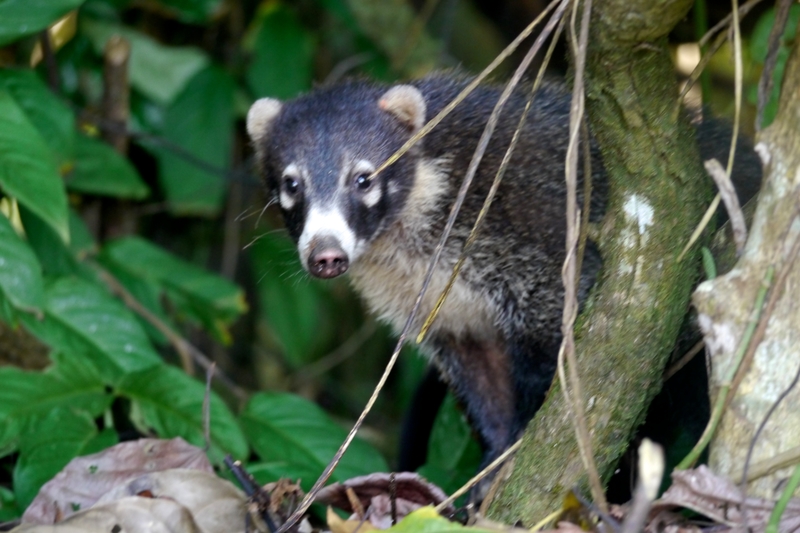
We began our walk at the Sirena Ranger Station and headed into the jungle. Layers of green foliage were so dense that it was difficult to spot animals on our own, though all around us we could hear singing birds and howling monkeys. Along the way, our guide pointed out the animals we would have never spotted on our own–adorable spider monkeys, lethal fer-de-lance snakes, coatis, peccaries, lizards, spiders, anteaters and birds. We even had the privilege of sneaking upon the hidden lair of the elusive and nocturnal Baird’s Tapir.
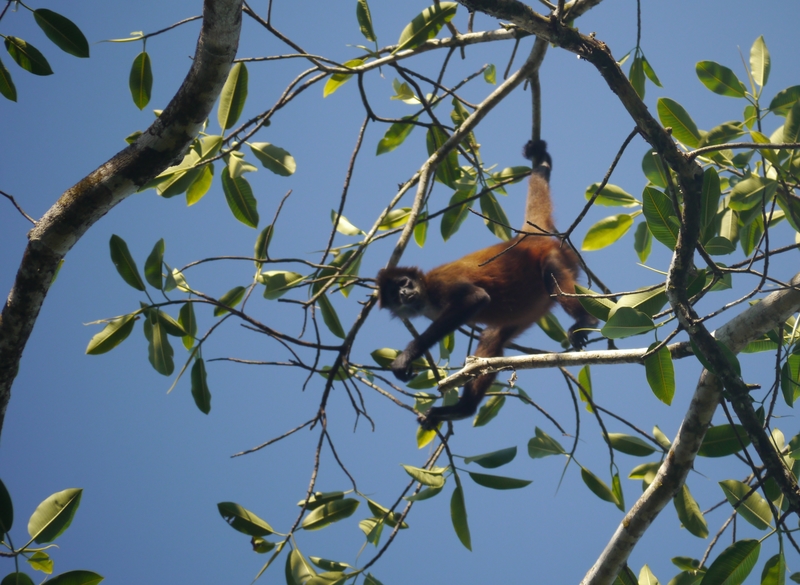
Though I often had good views of the wildlife with my naked eye, the dense shrubbery and branches made it difficult to capture unobstructed photos of the animals. As a result, the photos I have of our hike do no justice to what we saw at Corcovado National Park.
CANO ISLAND SNORKELING IN CORCOVADO
The next day, I embarked on a snorkel tour to Cano Island and caught a glimpse of the underwater wonderland that contributes to the Osa Peninsula’s vast biodiversity.
Cano Island is a biological preserve located 10 miles off the coast of the Osa Peninsula. Its waters house a diverse array of marine life, including colorful tropical fish, rays, dolphins and whales.
The visibility was excellent and I swam among schools of colorful parrotfish and angelfish, following them around outcrops of volcanic rock.
To cap off another excellent day of wildlife viewing, we witnessed a pod of dolphins darting playfully in our wake as we made our way back to the camp.
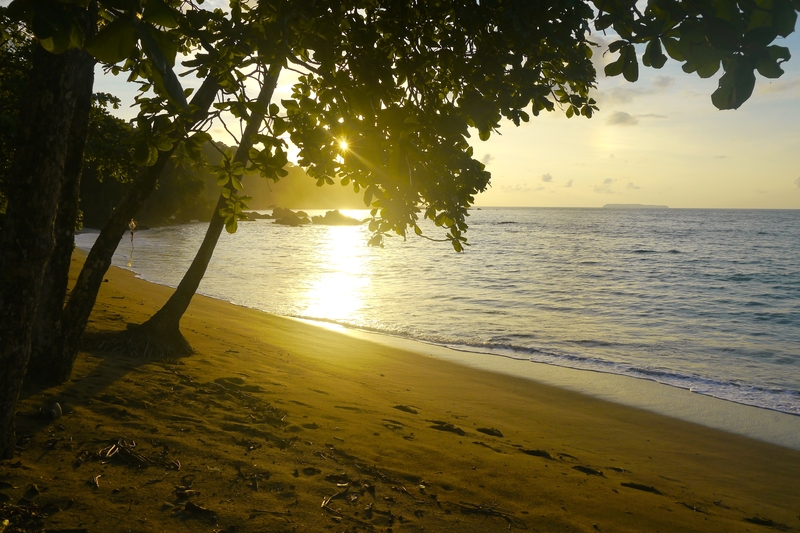
What made our stay at the Corcovado Adventure Tent Camp truly special, is that our animal sightings were not limited to the hours we spent within the confines of Corcovado National Park. In fact, some of our best interactions with animals occurred within the boundaries of our tent camp itself. On numerous occasions, we saw the frisky capuchins swinging in the trees above our tents. We spotted hermit crabs scuttling along the beach and little leaf-cutter ants hard at work on the forest floor. We witnessed eagles and colorful macaws flying overhead.
Some places–especially those that are remote and difficult to access–can come with a hefty price tag for visitors. But splurging is sometimes necessary, even when traveling Costa Rica on a budget. And I reckon there are not many places that merit a splurge as much as the Osa Peninsula–with its crescents of gold sand beaches and its pristine habitats.
I guess if I am going to empty my wallet anywhere, I may as well do it with a visit to the most biologically intense place on Earth.
***
Further Reading:
- If you enjoyed reading about the biodiversity in Corcovado National Park, check out Megan’s article on the world’s top destinations for wildlife viewing.
- I recommend you check out Samantha and Yeison’s blog, My Tan Feet, if you have plans to travel to Costa Rica. Their website contains a wealth of information on Costa Rica, including a complete breakdown of costs associated with travel to the country.
